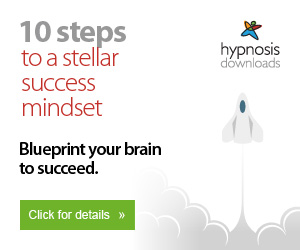But that ability is atypical; most of us, at one time or another, are daunted by illness or other mental or physical challenges. That’s where hypnosis can come in. Experts in a variety of fields say that patients become highly focused and open to suggestions when they are in a trance-like state.
Hypnosis is often associated with psychotherapy but is gaining popularity in more mainstream arenas. Athletes use it to improve their game. Dieters and chemotherapy patients have found it to be useful.
Here we take a look at six ways hypnosis is used in medical and nutritional communities:
Radiation and chemotherapy
Psychologist Charlene Williams, clinical programs director of the Mind-Body Medicine Group in the division of head and neck surgery at UCLA, uses hypnosis with patients diagnosed with cancer. Patients undergoing chemotherapy and radiation may opt for hypnosis recordings to help them endure their grueling treatments. “A lot of patients going through chemo or radiation feel as though they are at death’s door,” Williams says.
How it works: Williams references cooling imagery — chilled lemonade, a mountain stream, cold weather — when she creates hypnosis recordings for patients. “Sometimes patients come up with their own imagery,” she says and adds that cooling imagery helped one patient control airway inflammation.
The technique worked so well that another patient shivered during treatment. “We had him imagine putting snow all around his neck. So the coolness just permeated down each level and layer of the skin.”
Some of these same techniques were used with second- and third-degree burn patients in the emergency room, Williams says. Those patients had less redness and were better able to manage their pain.
Try this: “Learn to become absorbed in the imagery,” Williams says, while disengaging from your barrage of negative thoughts.
Stress and anxiety relief
Feeling anxious or uneasy before giving a speech to 50 people is normal — it is estimated that 40 million people in the U.S. are affected by anxiety. But when these feelings turn into frequent uneasiness and sweaty-palms nervousness that affects your job and quality of life, you might consider hypnosis.
How it works: Sometimes it feels scary to acknowledge uncomfortable feelings, but hypnosis can help alleviate the fears. In a relaxed state, it’s easier to “separate your physical from your mental experience,” says Dr. David Spiegel, who is the Jack, Samuel and Lulu Willson professor in medicine at Stanford University.
When we experience strong emotions like anger, we don’t always think clearly, Spiegel says. By regularly using hypnosis to enter a relaxed mental space, we essentially train ourselves to remain calm.
Try this: The next time you notice mounting anxiety or stress, solve it with an imaginary screen. “On the left side, imagine something that’s troubling you, on the right, imagine one thing [you] can do about it,” Spiegel says. “It’s a way of thinking through things [that are] stressing you out without psychological and physical tension.”
Dieting
Maybe the idea of cake (with lots of frosting) rattles your brain from morning to night. Want hypnosis to change that? Start noticing those thoughts and refocus them, says Colin Christopher, a Canadian certified clinical hypnotherapist and the author of “Success Through Manipulation: Subconscious Reactions That Will Make or Break You.”
“The overweight person is usually focused on their results [on the scale]. The fit, healthy person thinks more about sports, activities and eating healthy foods.”
How it works: During hypnosis, the subconscious mind opens up more easily, Christopher says. Some refer to this as the moment we suspend belief about our perceptions. “The subconscious mind doesn’t know the difference between what’s real and imagined,” so go ahead and start programming the mind to do what you want it to. Think about smaller food portions or clothes that fit loosely.
Try this: Visualize eating a bowl of dark red cherries or savory vegetarian chili. See yourself preparing a fresh salad with romaine lettuce, carrot shreds and tomatoes. “Imagine whatever food you’re eating, that every time you swallow you feel satisfied,” Christopher says.
Article source: http://www.latimes.com/science/la-he-hypnosis-20131130,0,671237.story


No Comment